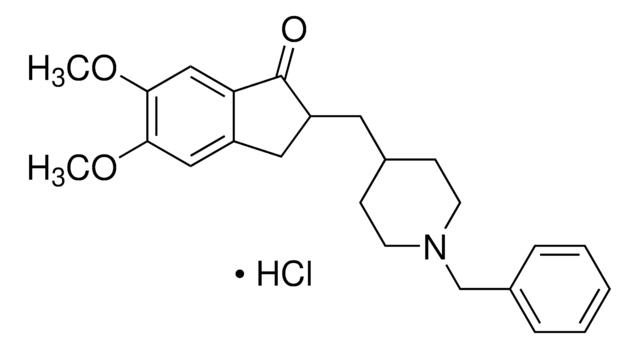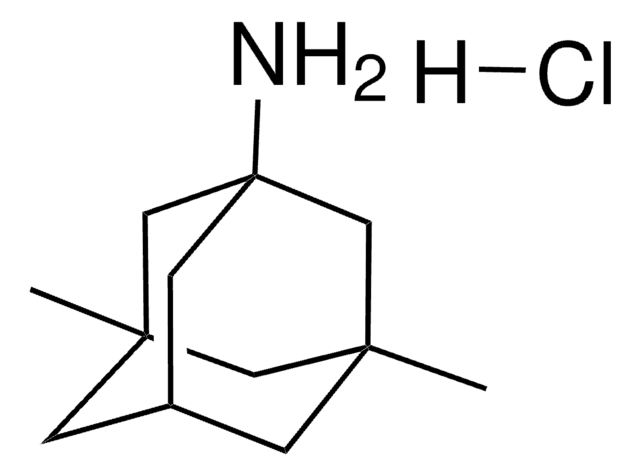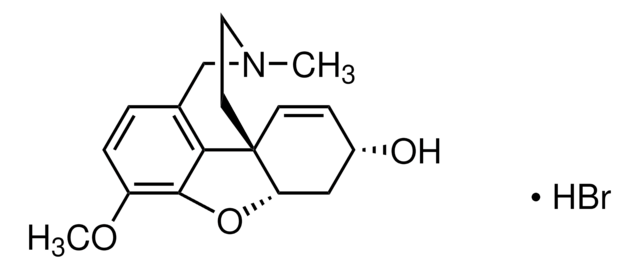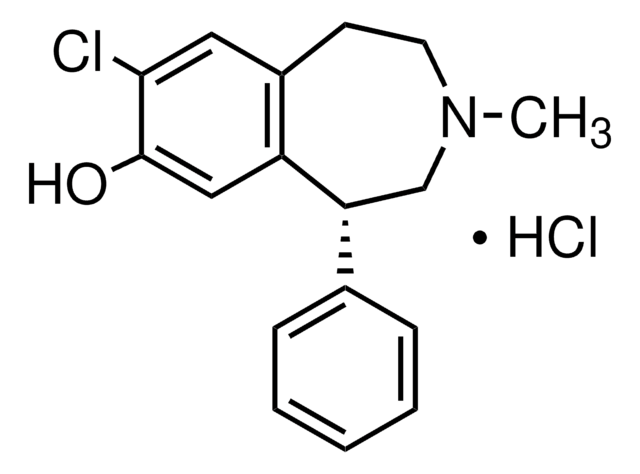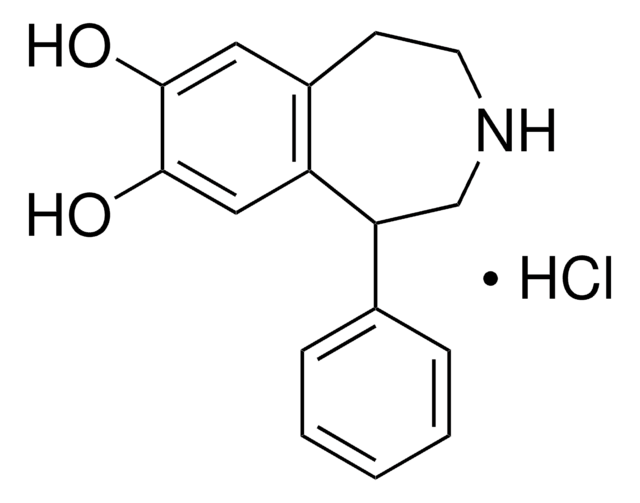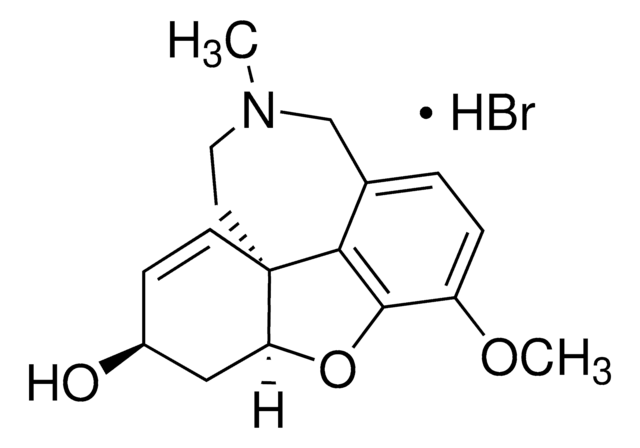SML0881
Rivastigmine tartrate
≥98% (HPLC)
Sinonimo/i:
ENA-713, Ethylmethyl-carbamic acid 3-[(1S)-1-(dimethylamino)ethyl]phenyl ester, N-Ethyl-N-methyl-carbamic acid 3-[(1S)-1-(dimethylamino)ethyl]phenyl ester tartrate, S-Rivastigmine tartrate
About This Item
Prodotti consigliati
Livello qualitativo
Saggio
≥98% (HPLC)
Forma fisica
powder
Condizioni di stoccaggio
desiccated
Colore
white to beige
Solubilità
H2O: 15 mg/mL, clear
Temperatura di conservazione
2-8°C
InChI
1S/C14H22N2O2.C4H6O6/c1-6-16(5)14(17)18-13-9-7-8-12(10-13)11(2)15(3)4;5-1(3(7)8)2(6)4(9)10/h7-11H,6H2,1-5H3;1-2,5-6H,(H,7,8)(H,9,10)/t11-;1-,2-/m00/s1
GWHQHAUAXRMMOT-RWALOXMOSA-N
Cerchi prodotti simili? Visita Guida al confronto tra prodotti
Descrizione generale
Applicazioni
Azioni biochim/fisiol
Caratteristiche e vantaggi
Avvertenze
Danger
Indicazioni di pericolo
Consigli di prudenza
Classi di pericolo
Acute Tox. 2 Oral - Aquatic Chronic 2
Codice della classe di stoccaggio
6.1A - Combustible, acute toxic Cat. 1 and 2 / very toxic hazardous materials
Classe di pericolosità dell'acqua (WGK)
WGK 3
Punto d’infiammabilità (°F)
Not applicable
Punto d’infiammabilità (°C)
Not applicable
Certificati d'analisi (COA)
Cerca il Certificati d'analisi (COA) digitando il numero di lotto/batch corrispondente. I numeri di lotto o di batch sono stampati sull'etichetta dei prodotti dopo la parola ‘Lotto’ o ‘Batch’.
Possiedi già questo prodotto?
I documenti relativi ai prodotti acquistati recentemente sono disponibili nell’Archivio dei documenti.
I clienti hanno visto anche
Articoli
Acetylcholine is synthesized from acetyl coenzyme A and choline by the enzyme choline acetyltransferase. In addition to its synthesis in the liver, choline employed in acetylcholine production is derived from dietary sources.
Il team dei nostri ricercatori vanta grande esperienza in tutte le aree della ricerca quali Life Science, scienza dei materiali, sintesi chimica, cromatografia, discipline analitiche, ecc..
Contatta l'Assistenza Tecnica.
